Best portable air conditioner
Don't break a sweat; use a portable air conditioner. Here are some of the best models.
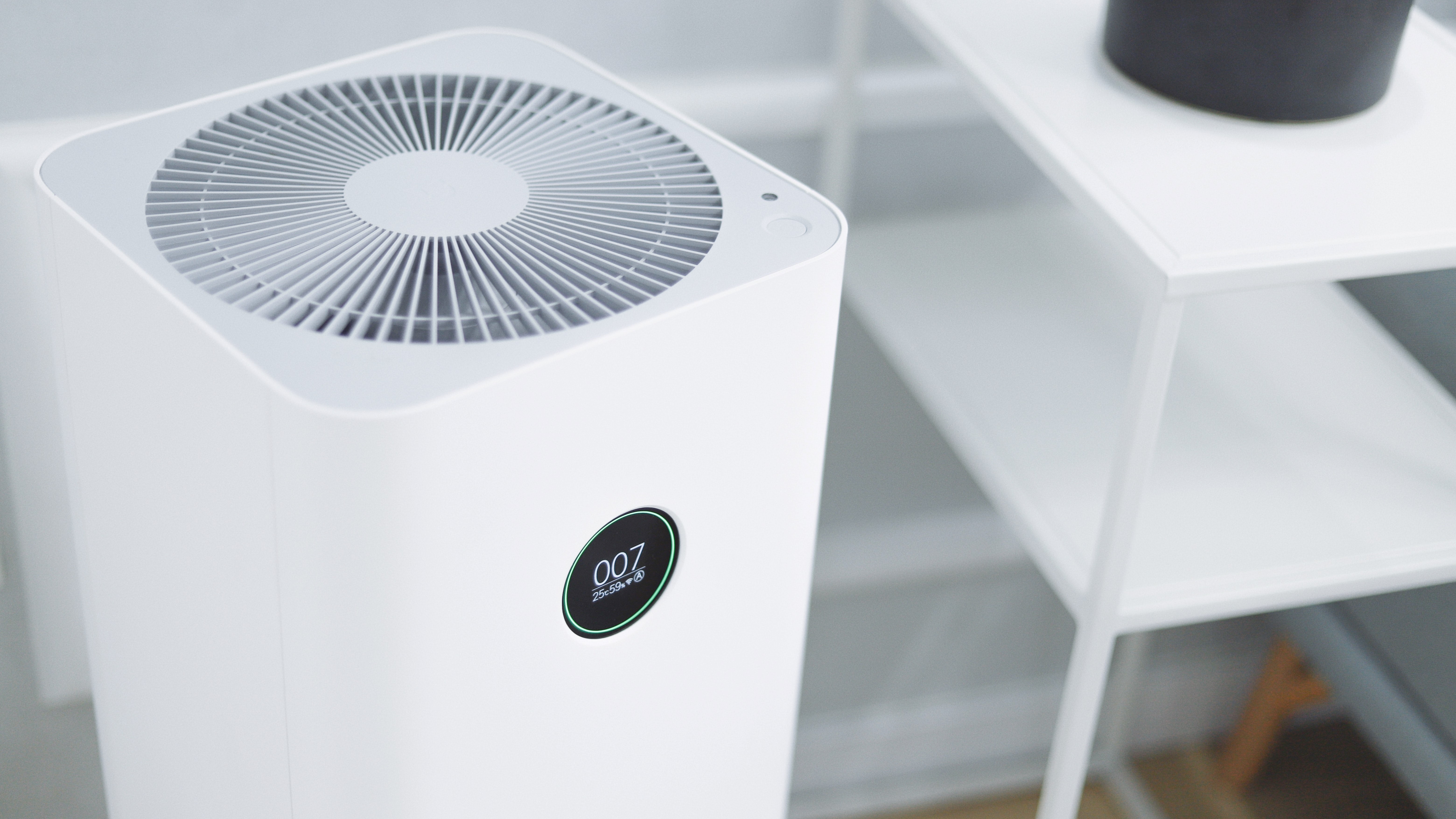
The best portable air conditioners will effortlessly cool a hot and sticky home. However hot it may be outside, a good a/c unit should be powerful enough to efficiently lower the temperature in your room, helping you feel fresh, store up on precious sleep, or complete a home workout without dripping in excess sweat. While larger portable air conditioners can become a staple in your desired room, more compact units can be whisked between locations. Both types are featured in our roundup.
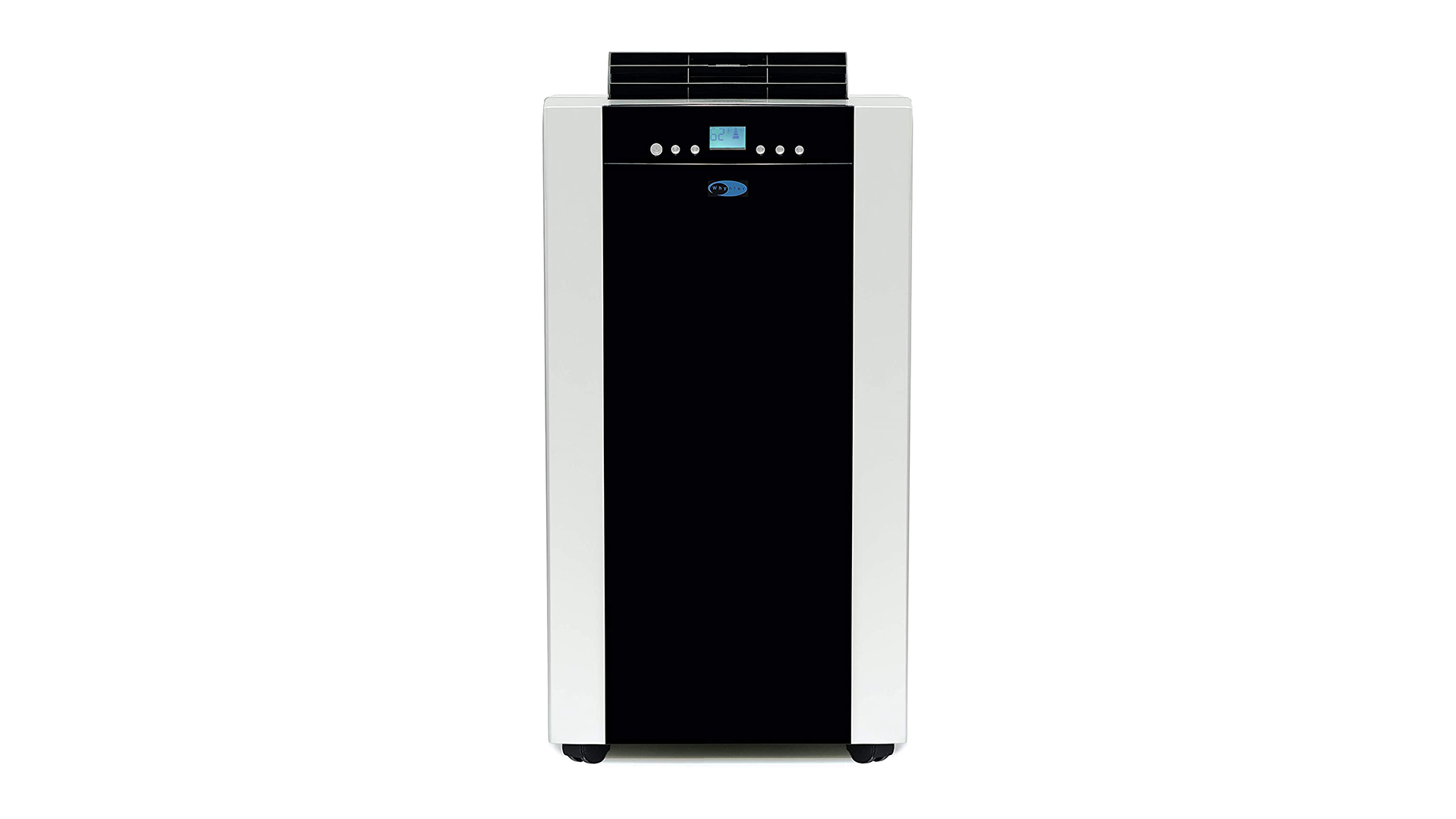
Whynter ARC-14SH portable air conditioner
Cool big, stuffy rooms
This cooling powerhouse uses 14,00 BTUs to cool up to 500 square feet of space. It comes with a built-in drain system that collects and recycles moisture from the air, and a dual hose system to cool rooms quickly.
Pros:
- Cooling powerhouse
- Dual hose operation
- Digital and remote controls
Cons:
- Large and bulky
- Not Wi-Fi enabled
The timer function is a handy addition for anyone who likes to take charge of their home’s temperature throughout the day. The remote control is also a convenient way to switch between the three modes, including a useful dehumidifier mode, while the digital controls give this unit a sleek and modern look. The device is slightly on the clunky side, weighing in at 80 lbs.
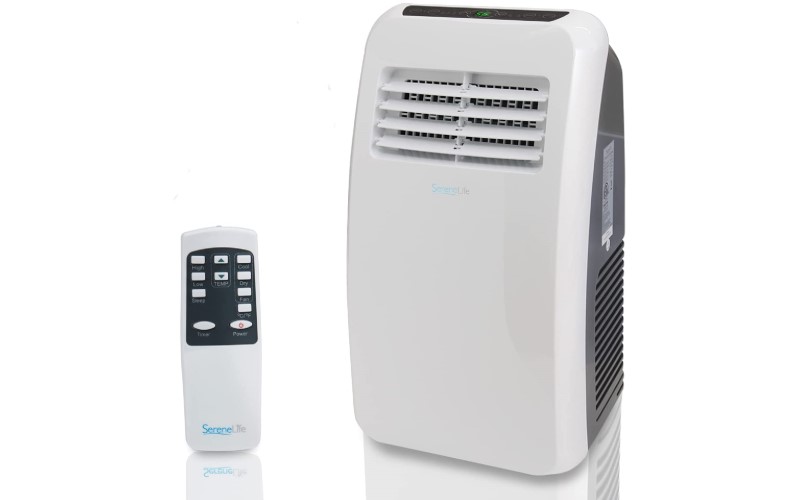
SereneLife portable electric air conditioner
Three uses, bang for your buck
The SereneLife portable air conditioner doubles as a dehumidifier. This makes it a good unit to use in humid climates or spaces because it pulls moisture from the air to make the room more comfortable.
Pros:
- Dehumidifier and air purifier
- Quiet
- Timer
Cons:
- Only cools 225 square feet
This freestanding model doesn’t make a lot of noise when running and cools smaller areas up to 225 square feet. You can choose to set temperatures to display in either Fahrenheit or Celsius, set a timer up to 24-hours in advance, and control all settings from the included remote control. The air conditioner cleans the air as it circulates through the unit. It pulls out dust, pollen, mildew, and other allergens. Its filters can be removed, washed, and reused to help save money on operating costs.

Black+Decker air conditioner
This air conditioner is small, so it will only cool about 150 sq ft. This makes it perfect for dorms, apartments, offices, and RVs. It runs quietly, so it won't disturb you while sleeping.
Pros:
- Good for dorms and apartments
- Fan mode
- Built-in dehumidifier
Cons:
- Strugglers in large spaces
The remote control and digital display panels let you set the temperatures down to 65 degrees Fahrenheit, and set a time up to 24 hours. The hose is small - under 5ft - but it comes with the adapter you need to attach to a window for optimal use. It can be used as a fan, or dehumidifier, too.
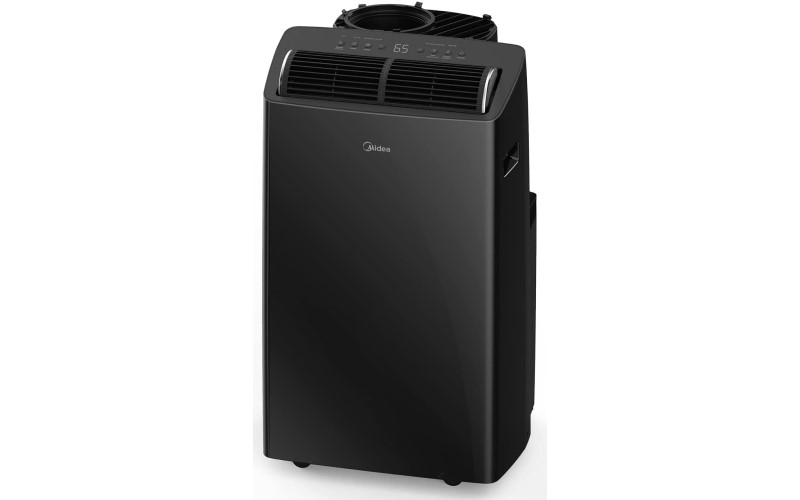
MIDEA Duo portable air conditioner
Cool every inch of your room
The MIDEA Duo is smart-home enabled, meaning you can sync it with the Amazon Echo, and Google Assistant to control it vocally, or with your smartphone. The unit has easy-to-use control buttons, rather than a digital control panel.
Pros:
- Connects to smart home devices
- Reusable air filters
- Cools large areas
Cons:
- No digital controls
It cools down to a nice 52 degrees Fahrenheit and works as a dehumidifier, too. The adjustable window brackets work with most window types, and the included hose is 5-feet long, so you can easily position the air conditioner where you need it. It has a sleep mode that runs quieter and reusable air filters that clean dust and debris from the air while it cools. It comes with a remote control.
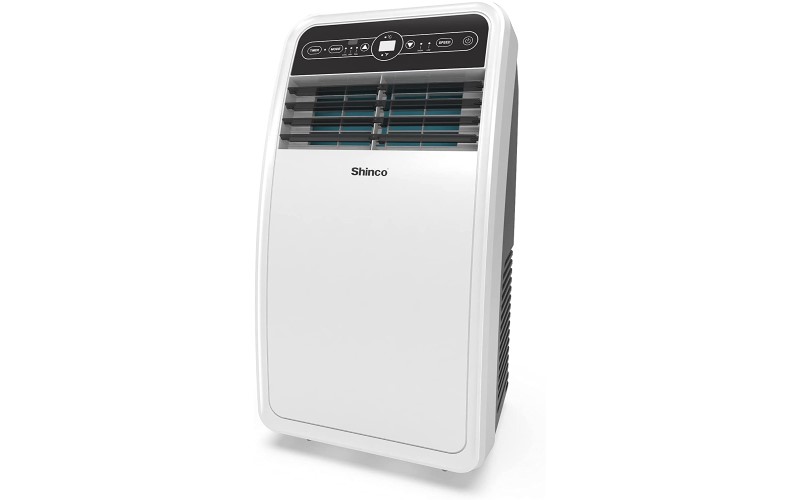
Shinco portable air conditioner
Compressor cooling
The Shinco is a smaller portable air conditioner that cools room space of around 200 square feet. This is a good choice for cooling smaller spaces, including campers, offices, and bedrooms. It cools quickly using a built-in compressor, the same cooling system used by most refrigerators.
Pros:
- Compressor cooling
- Self-evaporation
- Remote control
Cons:
- Only two fan speeds
There is no collection bucket, instead, it uses a self-evaporation process. It does have a dehydration setting for more humid environments and a fan-only setting. The air conditioner is easy to move and position where you need it because of the four caster wheels. It also comes with a remote control, so you don’t have to move to adjust the settings. There are three different cooling modes, but only two fan speeds.
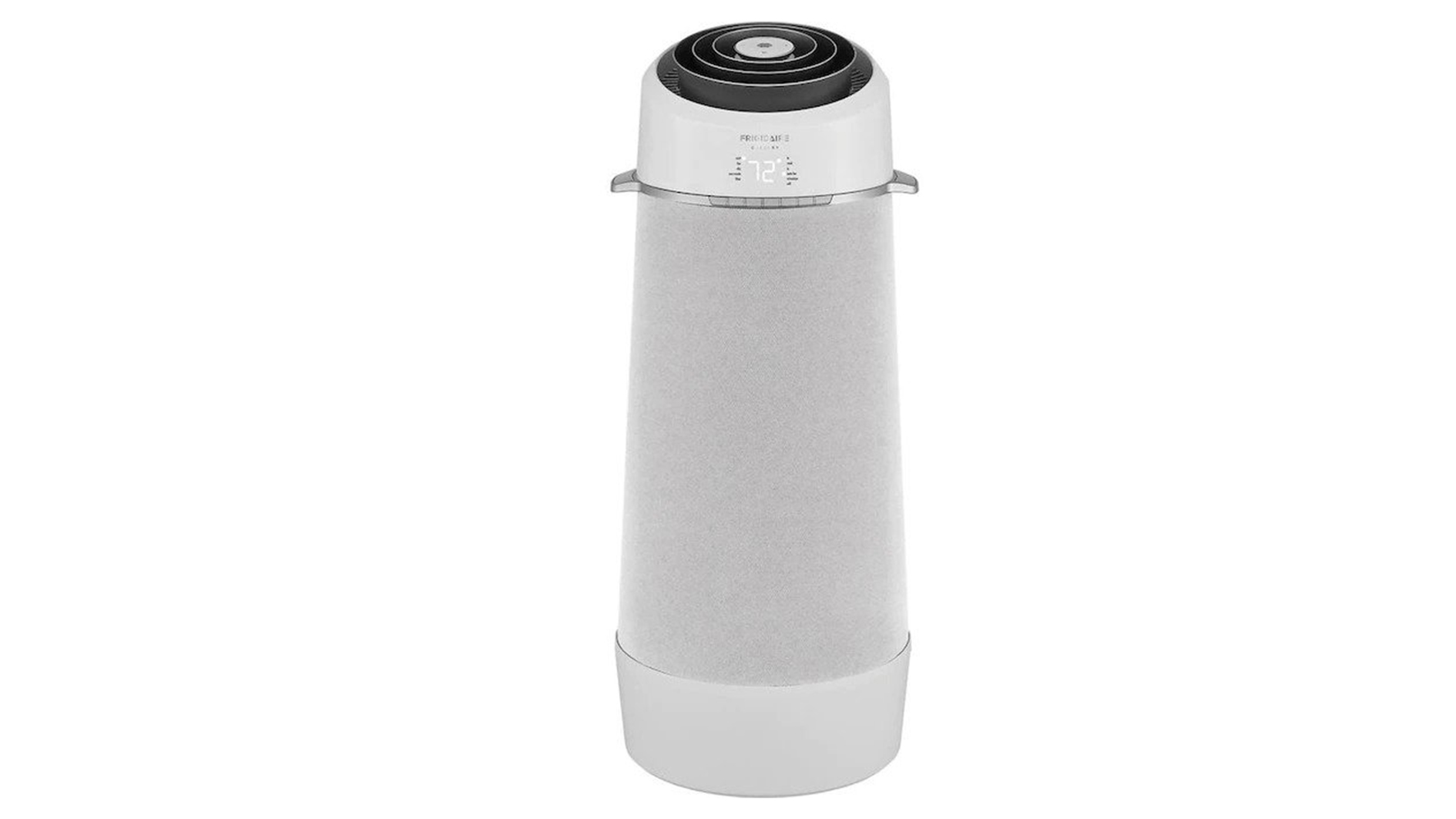
Frigidaire FGPC1044U1 Cool Connect smart portable air conditioner
For stylish homes
The Frigidaire FGPC1044U1 enhances the look of your room and cools it, too. Its vents are located at the top of the unit in a full-circle design, so cool air is more uniformly circulated, and hot air doesn’t become trapped.
Pros:
- Cool design
- Wi-Fi enabled
- Digital controls
Cons:
- Large and heavy
- Water drain hose not included
There’s plenty of power to cool up to 450 square feet of space. And it's one of the quietest units. Even on full blast, you can easily hold a conversation. The control panel features LED lighting, and it comes with a remote control. It is Wi-Fi enabled and connects to your smartphone through the Frigidaire mobile app. This allows you to set a timer, adjust the temperature, and turn on any of the three modes, even when you’re not home.
Sign up to receive the latest news, reviews, buying guides and deals direct to your inbox
How to choose the best portable air conditioner
When looking to buy a portable air conditioning unit, there are some key considerations you need to make, as well as some jargon you need to understand. Here's what to look for before you buy a portable a/c unit.
BTU stands for British Thermal Unit and is basically a means to measure heat. Air conditioners use BTU to measure how much heat an air conditioning unit can add or remove from a room in the space of an hour. The higher the BTU rating, the quicker the unit will remove the warm air.
Hose length is an important consideration before buying a portable air conditioner. They all need to be vented outside through a window. If you have furniture in front of the window, a longer hose is needed to vent heated air outside.
Look at the space you have available and where you want to place your portable a/c unit. Measure this distance to make sure the hose is long enough. We would recommend portable models with a hose length of 5 feet or more for maximum flexibility.
Remember, portable air conditioners are noisy. They use motorized fans and compressors that create airflow. If you are looking for a quieter unit for the bedroom or something that you can hear the television over, we recommend you check the decibel levels.
Are air conditioners with a high BTU better?
You should always calculate the BTU you need for your space and buy a machine that is capable of cooling that air. An air conditioner with a high BTU rating will cool a small space quickly and cycle off. This could cause the temperature to climb again, and you’ll need to restart the machine.
This is not only frustrating but turning the machine on and off in a small amount of time can cause extra wear and tear on the compressor, shortening the lifespan. So, a higher BTU is not always the sensible option.
But you should always err on the side of having the BTU rating being slightly higher, as choosing an air conditioner with a lower BTU for space might mean you will never reach your most comfortable temperature.
How to calculate the BTU needed for your room size
BTU rating is used to calculate the maximum room size for an air conditioner. First up, you need to measure the room you plan to use the AC unit in. Once you've done that, you can use the chart from Energy Star to determine the BTU you need.
Reviews
Whirlpool 24" Stainless Steel AI Dishwasher Review
Napoleon TravelQ PRO285 Portable Gas Grill review
Dreame L40 Ultra Robot Vacuum Cleaner and Mop review: almost hands-free cleaning
GE Profile Smart Mixer with Auto Sense review: a powerful, thorough mixer
Echo eForce DPB-2500 review: a leaf blower as a snow removal tool?
DPAS-2100 + Pro Paddle Attachment review: a new way to remove snow this winter?
Midea MAD53109APK 5.5QT Air Fryer review: a small, simple, and highly effective option
Eureka J15 Pro Ultra Robot Vacuum review: hands-free cleaning for busy families
This is just an average, and other factors will affect the calculation. If you are on a higher floor or a room is in direct sunlight, it is best to adjust the air conditioner’s BTU rating by 10%.
In rooms that are naturally shaded and not exposed to sunlight, you can reduce the BTU rating by 10%. However, it is best to overestimate the BTU; better to have more than not enough.
In rooms where there are heat sources, like an oven, it is advised you add 4000 BTU onto the rating to counter your appliances.
Apart from room size, you can also look over the unit's other power specifications such as power level, airflow, moisture removal, and fan modes, all of which determine the effectiveness of a portable air conditioner. However, comparing room size against the BTU is the best indicator. In general, higher values mean higher performance, though the most powerful machines often have lower energy efficiency.
Why trust us?
At Top Ten Reviews, we recommend the best products to enhance your life. As experts, we handpick products based on quality and usefulness to positively impact your life. We take our responsibility seriously — testing products, reading reviews, and sourcing knowledgeable outlets to ensure our selections are worthy of your time and money. Our detailed product overviews balance objective information with subjective opinions, so making the best choice for your home and lifestyle is easy.
Luke is a veteran tech journalist with decades of experience covering everything from TVs, power tools, science and health tech to VPNs, space, gaming and cars. You may recognize him from appearances on plenty of news channels or have read his words which have been published in most tech titles over the years. In his spare time (of which he has little as a father of two) Luke likes yoga, surfing, meditation, DIY and consuming all the books, comics and movies he can find.

